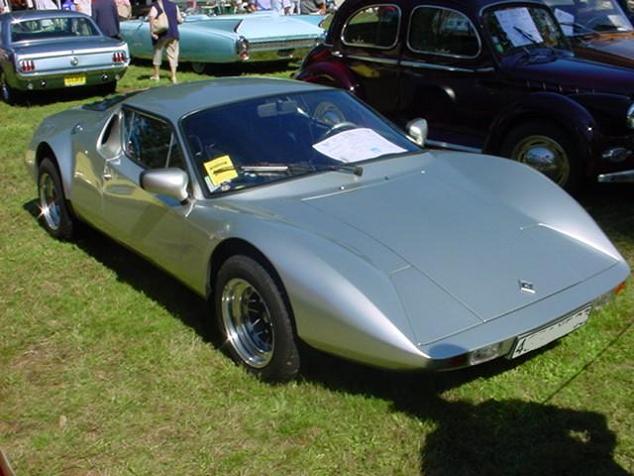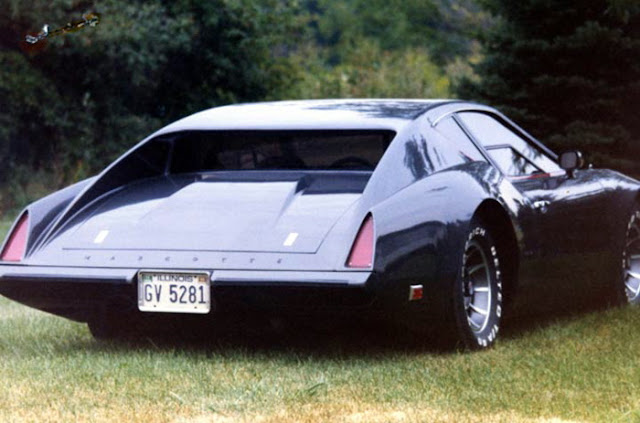 |
The SARAP 701
|
This is the story of the SARAP 701, a model that bridged the gap between the company's road racing inspired origins and its commercial success pioneering a "Dune Buggy" in France.
In 1967 André Koenig, a young engineer and racecar enthusiast, made a prototype inspired by the cars that raced in the Le Mans 24 Hours. With ambitions to market his design as a kit car, he founded the Alsatian Society for the Research and Application of Polyesters (SARAP) the following year.
He called their first product the "SARAP 671" and his newly minted firm made around a dozen of them. That car was developed further, per customer feedback, into the "691". Two of those were made as prototypes, with the goal of making their future kits less costly and challenging to potential builders.
 |
Craftsmen work on the SARAP 701 body buck
|
Due to the complexity and track focused nature of Koenig's initial model, the "671", a decision was made to produce a more "street-able" car with simplified construction and greater ease of assembly by their customer. The result was the SARAP 701 and it made its debut in 1970.
The 701's design retained the mid-rear engine and two seat packaging of the earlier cars. It was low slung, with a steeply raked windshield (from the Fiat 124), a louvered rear deck, and the obligatory pop-up headlights that were the height of style at the time.
The chassis was a box section tubular spaceframe with a central backbone, designed to accept suspension components from the Renault R8, as well as a variety of Renault and Gordini engines. It also featured fiberglass bodywork that bolted directly to the 701's frame.
 |
The SARAP 701
|
In order to market the new model, Koenig teamed up with publicist Roland Beilé who had just returned from a visit to the USA.
During his stay Beilé discovered the dune-buggy craze that was taking hold of the custom car scene in the States and saw an opportunity. So Beilé created a new marketing campaign for a buggy that would utilize the chassis of the 701, with minor modifications, dressed in a new GRP body of his own design.
After hearing the proposal, Koenig agreed to give Beilé's dune-buggy idea a shot. As it turned out, this proved to be quite successful and would take the company in whole new direction. It was called the "Buffalo" and would be made in considerable numbers. As many as 600 are believed to have been produced and sold.
With the growing demand for this new buggy, production of the 701 sports car was shelved. Only 6 copies were officially manufactured between 1970 and 1975.
After that, the molds are said to have "disappeared". However, in the early 2000's some reproduction shells started to appear so it is unclear how many 701's were ultimately produced and which of them are genuine.
Today 5 of the original 701's are believed to have survived. The "Buffalo" dune-buggy that the 701 spawned has an active owner's club and sizable fan following.
Sources:
 |
The original SARAP 701 prototype
|
 |
| The 1970 SARAP 701 |
 |
| The 1970 SARAP 701 |
 |
| Some examples of the 701 have fixed headlights as shown, while other builders opted to do pop-ups. |
 |
The Le Mans inspired prototype SARAP 671 was created in 1967.
Around a dozen copies were produced between '67 and '69, at least 2 survive.
|
 |
| The original SARAP 671 competing at the BALLON d'ALSACE in 1969 |
 |
| An original prototype SARAP 671 at left, with the 701 |
 |
A SARAP 701 with fixed headlights and external door hinges
|
 |
A 1970 SARAP 701, head on
|
 |
A 701 with fixed headlights
|
 |
The same 701, in a rear 3/4 view.
|
 |
1970 SARAP 701
|
 |
The SARAP 701 from above
|




















Interesting reading. I must find time to read more of these! Appreciate the time you put into these pieces. Thanks
ReplyDeleteThe silver car with the pop up lights is clearly the nicest one of the bunch certainly a very good piece of design work, a shame more were not built. The external door hinges and the fixed look like pop up lights does not work for me.
ReplyDelete